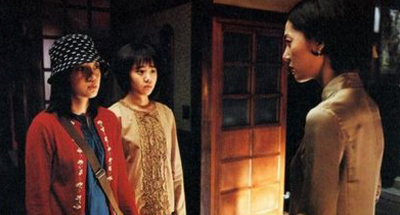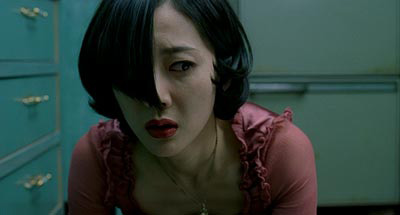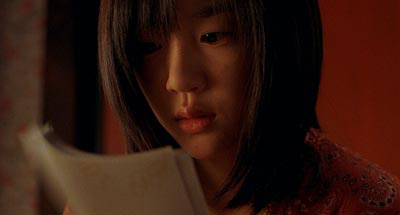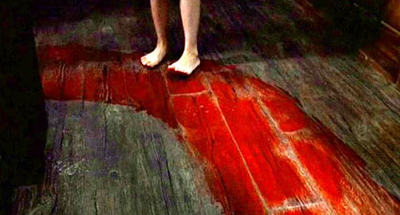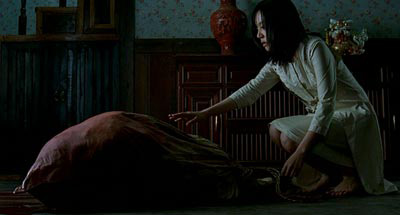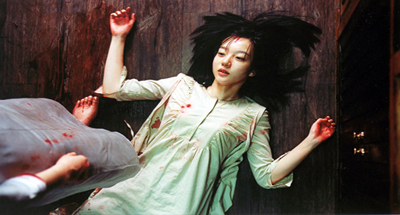
 |
|||||||
"Do you know what's really scary? You want to forget something.
Totally wipe it off your mind. But you never can. It can't go away,
you see... and it follows you around like a ghost."
Synopsis: Sisters Su-mi and Su-yeon have always been very close and, since the death of their mother, Su-mi has become extremely protective of her sister. Their father has recently remarried and his new wife has become the girls' stepmother - increasingly ruling the household with an iron fist - and though Su-mi has always managed to confront and stand up to her stepmother, Su-yeon, being younger and very fragile, has been unable to defend herself against the increasing psychological and physical abuse inflicted on her by the woman. Worried for Su-yeon’s safety, Su-mi has tried, on many occasions, to talk to her father about the situation, but he has been rather distant, seeming almost uncaring and unwilling to listen. Review: The film begins in an institution of some kind, with a doctor attempting to get Su-mi to talk about "that day". She pays no attention whatsoever and stares at the floor, her hair covering her face, until the doctor shows her a picture of her family, at which point she looks up slowly and stares, almost longingly, out of the window. The scene then cuts to Su-mi and Su-yeon being taken home by car, their father greeting them on their arrival, and all seems utterly idyllic until their stepmother makes her entrance. She is overly, obviously falsely, nice and it is instantly clear that Su-mi hates her, while Su-yeon is truly frightened of her. Almost immediately subsequent to this encounter, the strange occurrences start to take place and Su-mi begins her battle against her stepmother, while desperately trying to protect her sister from her. A lot of horror films are described in dark, brooding terms but very few could be described as beautiful. A Tale of Two Sisters is a sumptuously beautiful film. The ongoing flower motif throughout the movie gives warmth to the early scenes but, as the tension begins to build, takes on an oppressive, claustrophobic quality and almost becomes a character in itself. This is certainly not a standard horror movie and, though there are spine chilling moments, they are not actually the focus of the storyline, which is much more centered around the battle of wills between the main characters. Yes, there are demons present, but they are mainly those created by child abuse, mental instability and suicide. The best way to view a film like A Tale of Two Sisters for the first time is to know as little of the storyline as possible (anyone who has already seen the film will know what I mean) and, as such, reviewing it presents a difficult task. The story builds slowly, to such an extent that the growing tension is almost palpable; the story grips from the first moment to the last; and, unlike most Hollywood fare, viewers are not led through the plot by the hand. The set pieces are also so cleverly put together that, no matter what your perceptions of what you're seeing are, you'll find yourself rethinking the ongoing events at least twice before the credits role.
Cast & Crew: The entire cast perform admirably throughout A Tale
of Two Sisters: DreamWorks have bought the remake rights and plan
to release their version (to be entitled The Uninvited) sometime in
2009. It is hard to imagine a major US studio releasing a film with
such a fragmented narrative, so anybody who is baffled by the Korean
original and prefers a more cut-and-dried approach to storytelling
may favour the no doubt simplified American version instead. My
personal feeling is that an American remake is entirely unnecessary
and will undoubtedly be a watered-down, blander, and less
interesting film.
DVD Commentary with director,
cinematographer and lighting director Behind The Scenes Extras/Technical Dolby Digital 2.0
|
|||||||
All images © Tartan Video Review © P. Quinn |
|||||||

